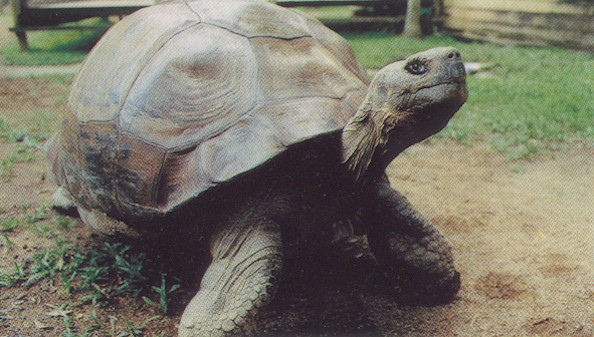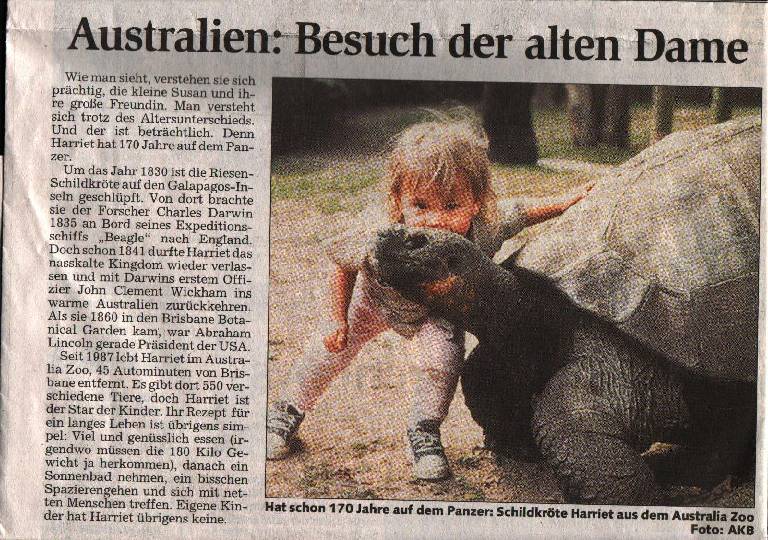
At the age of five, she and two other tortoises were captured by Charles Darwin during his voyage with HMS Beagle, and became his pets. (He refers to them being "dinner-plate sized", which for this species means their being about five years old.) Their gender not being obvious yet, he called them by the familiar English triad of first names, Tom, Dick, and Harry. [The gender of adolescent or adult tortoises is most easily determined by whether the plastron (bottom shell) is co ncave (for a male, facilitating what I shall politely describe as union with the female), or flat (for a female, granting room for her eggs to grow). The trouble, you see, was the adult Harry/Harriet's being so heavy that nobody had ever tried to flip her on her back to check :-)]
Darwin was fascinated by the Galapagos tortoises, in particular when he noted that the different islands apparently contained distinct sub-species adapted to each island's particular conditions. This was one of many observations that led him to formulate his theory of evolution.
The cold and damp English climate did not agree with the tortoises, and in 1841 they were taken to Brisbane, Australia on the next voyage of HMS Beagle under Captain Wickham. They were kept at the Botanical Garden there. After the two other specimens went to, well, the big dandelion field in the sky in the 1920s, Harriet was brought to the Queensland Museum, but documentation on her had gotten lost in a flood.
Only in 1992 was her identity rediscovered through DNA testing at Texas A & M University. She is presently being kept in the Australia Zoo outside Brisbane, where she has become the main attraction and something of an Australian national icon. [Read the full story here]
Every November 15, local schoolchildren organize a birthday party for her with singing, a cake, and flowers, the latter of which she finds particularly tasty. (CNN footage with video of her 167th birthday party)
Two "mish`alot lev" (wishes of the heart):

|Gershom's personal home page|Computational Chemistry home page|